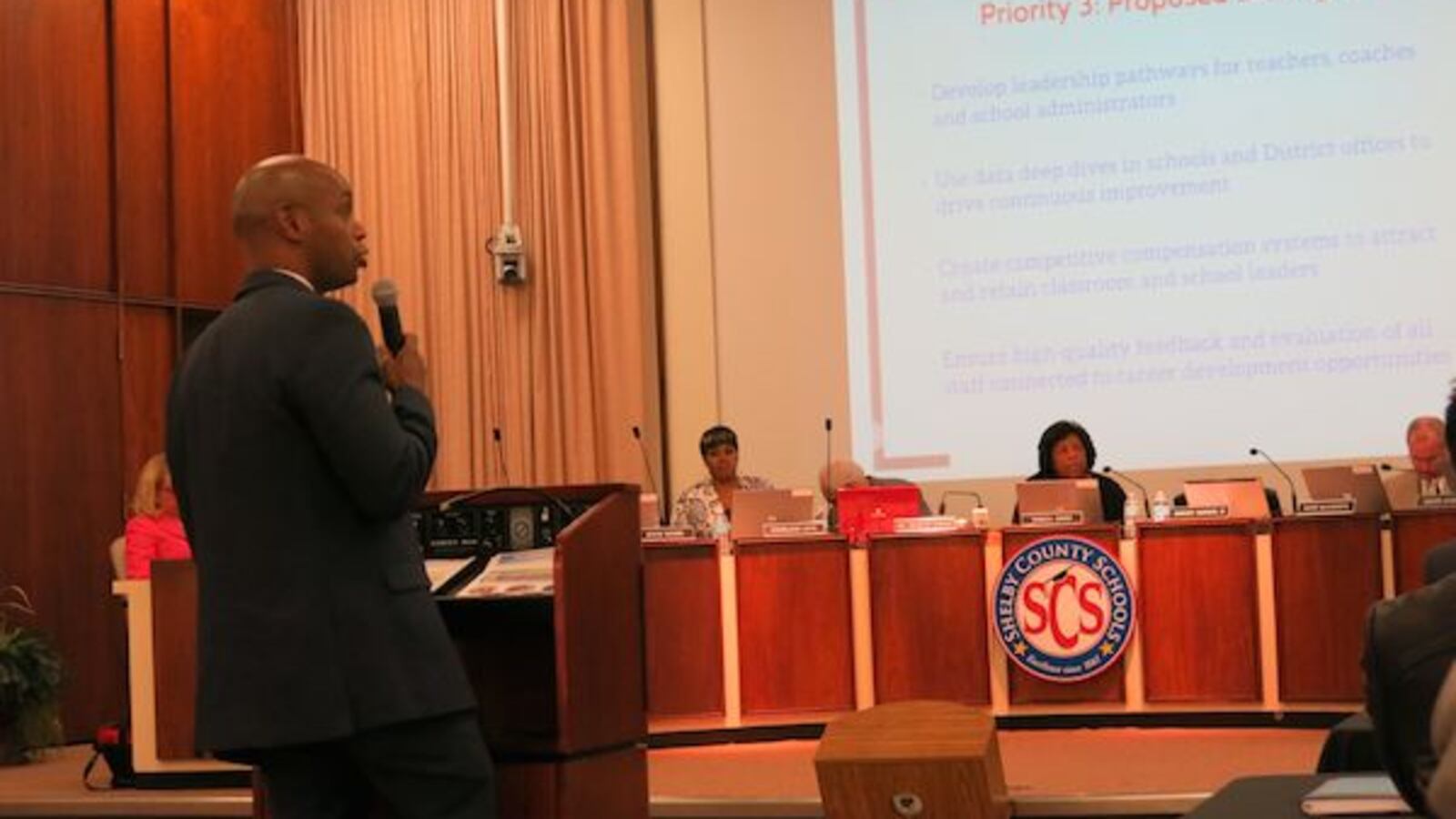How does a beleaguered school district eat an elephant? One bite at a time, according to Shelby County Schools Superintendent Dorsey Hopson, who this week unveiled the district’s strategic plan for transforming public education in Greater Memphis by 2025.
Grappling with data showing how thousands of its students start behind each year and stay behind throughout their school experience, Hopson outlined priorities of the district’s new “80-90-100” plan, under which 80 percent of seniors would graduate college or career-ready, 90 percent of students would graduate on time, and 100 percent of college- or career-ready graduates would enroll in college or other post-secondary opportunities.
The challenge: Students who start school but are not ready for kindergarten tend to stay behind. Those same students generally are not reading on grade level by the third grade. They then are not proficient in seventh-grade math and ultimately unready for college, according to the district’s data.
“It’s a negative trend that will continue to impact our community if we don’t change course,” Hopson told the Shelby County School Board at a work session on Tuesday. “This plan is a significant shift in culture for our district. We are striving for student outcomes that are more ambitious than anything we’ve attempted before, and we are ready to be accountable for our successes and failures in a very transparent way.”
The board approved the district’s 80-90-100 goals last April, and the district has since been developing an action plan based on community input meetings, school employee surveys, discussions with community leaders, and focus groups with teachers and principals.
Hopson said the district has identified five priorities to reach its ambitious goals:
- Strengthen early literacy;
- Improve post-secondary readiness;
- Develop teachers, leaders and central office staff to drive student success;
- Expand high-quality school options;
- Mobilize family and community partners
Beginning with the 2015-16 school year, the district’s budget will reflect investment in these priorities, as will its alignment of department-level goals.
Chief Academic Officer Heidi Ramirez will present the district’s new literacy plan in February to address the district’s first priority–strengthening early literacy.
Currently, only 30 percent of district third-graders are reading on grade level. By 2025, the district aims to increase that number to 90 percent. To reach its goal, Shelby County Schools will need to improve its third-grade reading proficiency by more than 5 percent annually, or 470 students.
Post-secondary readiness is another priority because currently only 72 percent of students graduate on time, with an estimated 60 percent enrolling in post-secondary opportunities. The goal is to increase the graduation rate to 90 percent by 2025, with 100 percent of graduates who are college- or career-ready enrolling in post-secondary opportunities. To accomplish this, the numbers would need to increase by almost 2 percent annually, or 150 students each year.
Proposed strategies include providing more access to rigorous prep courses and personalized learning opportunities; expanding career pathways based on workforce demands and student interests; improving the district’s “early warning” system to intervene with students at risk of dropping out; providing better college and career counseling and supports to opportunities such as Tennessee Promise scholarships; and building partnerships with business and higher education communities to improve readiness.
The district also wants to address lackluster customer service.
“Things are getting better, but we still have a long way to go,” Hopson said. “There’s an expectation when you come in contact with [Shelby County Schools], it should be customer friendly. We have to be specific and intentional to change the culture. For people who don’t want to change, they are going to need to look for work somewhere else.”
Board chairwoman Teresa Jones suggested the district name an overseer to ensure implementation of the sweeping strategic plan. “We need to have one person who is dedicated to making sure all of the parts are moving in the right direction and in a timely manner,” Jones told Hopson.
Learn more about the 80-90-100 strategic plan here. Do you think the district’s plan is on target? Give us your feedback in the comments below.

